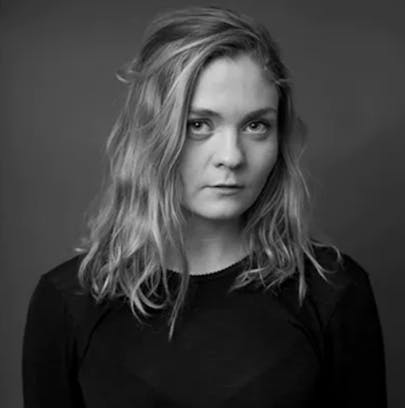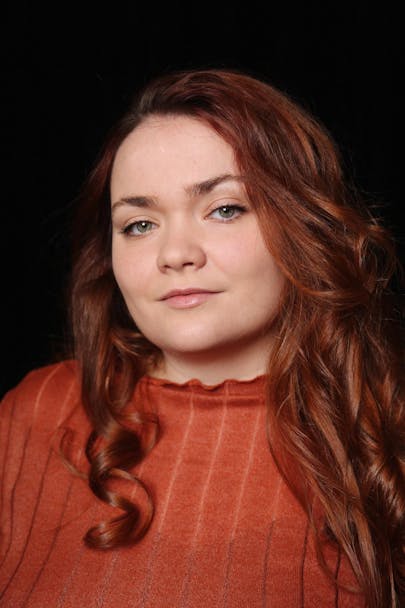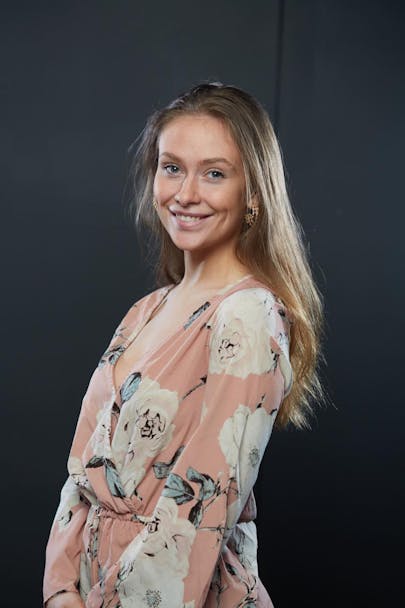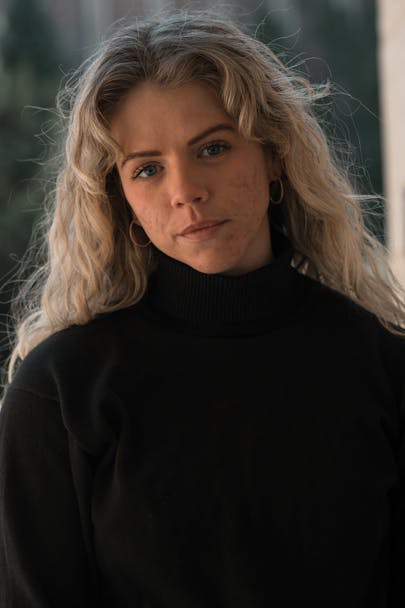Acting

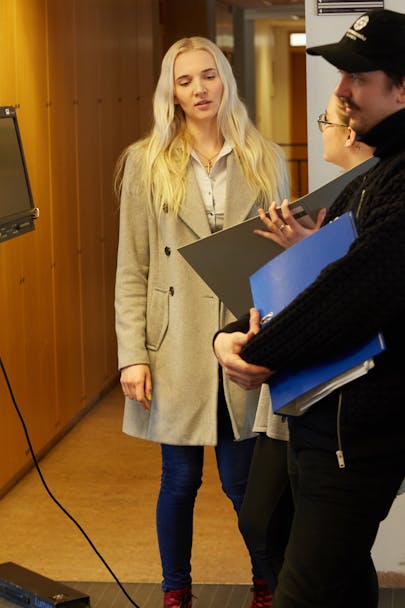
Acting
Learn to act for the screen
This department teaches the basic techniques and methods of acting for stage and screen. We encourage our students to explore their individual creativity and place special attention on dance, physical expression and singing.
Our curriculum provides a solid foundation for either an acting career in film, television, or on the stage or continuing a drama or filmmaking degree elsewhere. As opposed to many drama and acting programs we emphasize acting for the camera, which gives our students the opportunity to learn the basics of film production as well since they work on many film projects over the course of their studies.
Our program offers challenging professional training of the highest standard in the art of acting. You will practice the craft of acting and learn the fundamentals of filmmaking by working in teams with students of other departments in the school. This cooperation runs side by side with the acting studies throughout all four semesters. Our instructors are actors, directors, singers, dancers and filmmakers who come from a wide variety of backgrounds and experiences.
You will graduate from our program with a solid understanding of the professional actor’s working methods and obligations and with the selfconfidence and independence of a mature creative artist. Whether you go on to become a professional actor or filmmaker, or decide to continue your studies elsewhere, you will have built a valuable network of contacts starting right here at school, from your fellow students in all departments to a long list of talented, creative instructors.
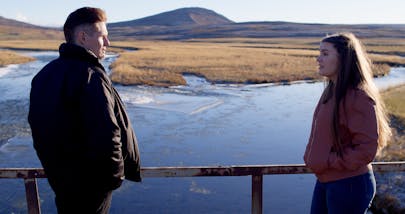
Department 4 prepares you for the following jobs
- Actor
- Actress
- Film maker (all the foundations)
Acting department heads
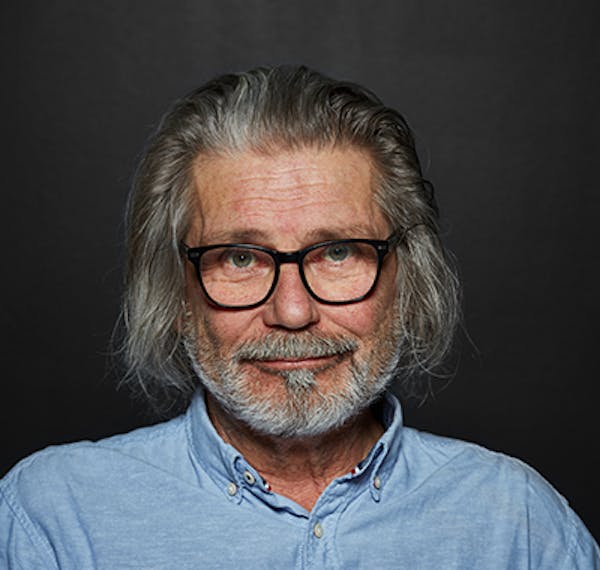
Runar Gudbrandsson
Rúnar studied acting in Denmark and worked there for a few years as an actor with various theatre groups. He went to Poland and Russia for further education. Rúnar got his MA in Theatre studies and Directing from De Montfort University in England and has finished the first part of a doctorate in Theatre studies. He was the first professor in Dramatic Interpretation at The Iceland University of the Arts. Rúnar has written and directed many theatre productions, both here in Iceland and abroad and taught acting and coached actors around Europe. He has as well acted in many films and TV shows.
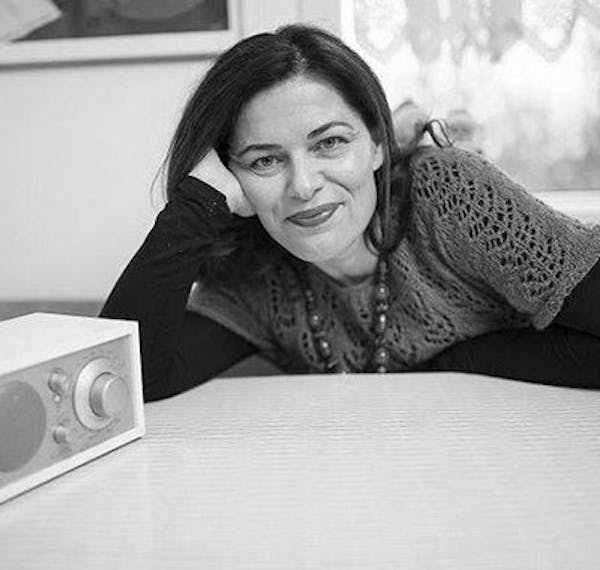
Thorey Sigthorsdottir
Thorey has worked as an actress and director in theatre and films since she graduated from The Icelandic University of the Arts in 1991. Thorey received her teaching license from The Icelandic University of the Arts in 2004, an MA degree in Advanced Theatre Practice from The Royal Central School of Speech and Drama in 2012 and an MA degree in Practical Cultural Communication from The University in Iceland in 2014. Thorey has for many years taught voice acting at The Icelandic University of the Arts and various courses for actors and people working with their voice. She has a license to teach the voice training method of Nadine George from The Voice Studio International in London and bases her teaching on the NGT method. Thorey is one of the founders and creative director of the theatre group "Fljúgandi Fiskar" who have produced a few shows, "Hotel Hekla" written by Anton Helgi Jonsson and Linda Vilhjalmsdottir, and "Medea" (multi media) written by Euripides to name a few. Thorey directed the play "Breathe" written by Duncan Macmillan which was premiered in Idno in 2017. Thorey has taught voice at The Icelandic Film School since 2016.
First Semester
Students acquire basic knowledge of the principles of movement and physical expression, both of which are drawn upon in the actor’s creative process. The course emphasizes the body as an expressive instrument and making students conscious of their body and of motion. Students explore many different methods in dance and movement to express and interpret stories, characters, feelings, etc. Students learn to adapt (transform) everyday movements in dance, move freely and to music in accordance with their own mobility. Emphasis is placed on students learning a systematic warm-up technique which is useful to them at work and in their studies. Additionally, the importance of taking good care of the tool that is their body is discussed with them, with regular exercise, sound sleep and a healthy diet. The students work on a stage production under the guidance of an instructor where physical expression is emphasized and the project is staged at the end of the course.
Course outline PDF download
The course is divided into two parts. The first part, “Text” (2 credits) is concentrated on vocal technique in spoken language and text rendition. The second part “Singing” (2 credits) is concentrated on singing.
Text: The teacher/instructor offers the students insights into the fundamentals of voice technique and text rendition with breathing and warm-up exercises, and trains the students in methods to spark their physical awareness and imagination. Their vocal powers are enhanced with short texts and poems. Emphasis is on the students being conscious of the importance of the interplay between voice and physical movement. The course culminates in a short text rendition by the student.
Singing: The students are introduced to the fundamentals of the “Complete Vocal Technique” singing method. Short and practical solutions that enhance the voice immediately are taught. During the introduction the students perform with accompaniment one or two songs suited to their singing voices.
Course outline PDF download
The course is divided into two parts. Acting technique (4 credits) and Dramatic interpretation (4 credits).
Acting technique: The course revolves around technique, training and the actor’s creative process. Initially areas concerning acting technique are covered - the actual craft of the actor. The actor him- or herself and the methods of interpretation are explored, but the students work on various text fragments and songs. This is the “actor working on himself” as Stanislavsky called it. Pre-expressive work based on the “recurrent principles” as Eugenio Barba formulated them. Emphasis is initially on form (technique) rather than content. The teaching makes use of various sources such as Grotowski’s rehearsal processes and Barba, Meyerhold’s biomechanics, Laban technique, view-point, Suzuki training, commedia dell’arte, etc. The students will then be able to use the technique they have acquired in a creative manner and there will be work with various types of improvisational technique and compositions.
Dramatic interpretation: The students are introduced to methods used in analyzing dramatic texts and inspired by Stanislavsky in that regard - both “cognitive analyses” and “work around the table” which he used in the first part of his career and “the method of physical action” which he developed towards the end of his career. The students work with concepts such as a fable, a twist, subtext, premises, circumstance, intent, hindrance, a physical action, inner life (thought, emotion) what “IF”, physical memory, emotional memory, sense memory, sympathetic insight, experience, etc. The students work with accessible plays suited to their growth (new - classic).
Course outline PDF download
Students work on a short of a maximum length of 7 minutes in a team effort with other departments where the students focus on the field of specialty of their respective departments. The goal is a completed film project of some kind. Emphasis is placed on students working with their own ideas and capitalizing on the experience they have acquired in other courses throughout the semester.
Course outline PDF download
This is a first semester beginners’ course and the goal is to teach students the basics of film production and the use and application of filmmaking equipment. Furthermore, the fundamentals of visual language are reviewed. The course is divided into three parts:
1. Preparation – Film production.
2. Location – Film and sound recording.
3. Post-production – Editing and finishing touches.
Course outline PDF download
Each semester students from all departments must earn credit in collaboration with other departments. The goal is that each department is ensured access to the other departments and to establish a thriving relationship between the departments.
Course outline PDF download
Some of the greatest works in the history of film are introduced, screened and discussed. Ten movies are shown each semester, a total of forty movies. Each semester represents a section of film history. The movies are screened mostly in a chronological order from the silent era well into the late twentieth century.
Course outline PDF download
Second Semester
The courses LEI202G and LEI303G are taught concurrently and 2nd and 3rd semester students attend classes together. The courses are divided into two or three sessions where abstract kinetic art is taught, where students are expected to acquire basic skills in different areas, all of which revolve around working with the body and its movements. The former session introduces students to circus acts and/or gymnastics. Emphasis is on how the actor can achieve enhanced physical skills and physical consciousness with circus tools and movements and/or gymnastics. Students learn how to make use of simple acting tricks, both in performances and acts. Famous performances that have drawn on circus and/or gymnastics successfully are examined (Vesturport, Peter Brook, Pippen, etc.). During this session the students develop physical self confidence and concentration.
During the latter sessions the emphasis is on the students developing agility and physical strength, for example with yoga, but with a yoga warm-up the body’s relationship with breathing can be tuned and concentration sharpened. The course works with the drama theories that connect acting with movement, i.e. the theories of Jacques Lecoq’s about the "7 levels of tension" where we intertwine work with breathing, focus, speed and rhythm to create characters and situations. The purpose is to make students realize how they can use the body to interpret inner life and tell a story.
Course outline PDF download
The course is divided into two parts. The second part, “Text” (2 credits, 30 hours) is concentrated on vocal technique in spoken language and text rendition. The other part “Singing” (2 credits, 30 hours) is concentrated on singing.
Text: The continued training of the actor’s voice with breathing and vocal techniques and emphasis is placed on the coordination of different factors. The voice is developed through physical exercises and various texts. In collaboration with their instructor, the students develop their own warm-up system connecting body, mind and voice. Various texts from dramatic literature and selected film scenes are used with an emphasis on the coordination of different factors, the opposites relaxation and tension. A strong emphasis is placed on the coordination of voice, mind and physical expression and practical initiative. The course culminates with the students’ rendition of various texts.
Singing: Continued training of the actor’s singing voice and technique with the “Complete Vocal Technique“ method. Emphasis is placed on independent creative working methods by selecting different tunes which develop the singing voice and enhance stamina and nuances. The students try out different things and are encouraged to challenge themselves in their choice of song. At the presentation the students sing 1-2 songs with accompaniment.
Course outline PDF download
The course is divided into two parts. The first part “Technique” (2 credits, 30 hours) is concerned with acting technique. The second part, “Interpretation” (4 credits, 60 hours) is concerned with dramatic interpretation.
Technique: This course is a direct continuation of Acting Technique 1. The importance of daily training is stressed and students are encouraged to use the acting techniques they have acquired in a creative manner. The imagination is activated and all kinds of compositional training takes place. Further acting methods are added to the arsenal (Brecht, Verfremdung) and the students work with these techniques in a creative manner. Inspiration will be drawn from surrealism, expressionism and the Theater of the Absurd. Plays (or texts such as poems) of that type will form the basis of the work. At the end of the course the students will showcase the results in a composite “montage” performance.
Interpretation: With the Stanislavsky acting technique and analysis the students acquired in Dramatic Interpretation 1 they continue to develop as actors. The students work on a play and selected scenes are placed under the microscope, dissected and interpreted, now with yet stronger emphasis on character creation and atmosphere. In this regard, Michael Chekhov comes into play - his theories and methods are introduced to the students in creative work with the play. At the end of the course the students perform fully rehearsed scenes from the play in an open class.
Course outline PDF download
This course is held in conjunction with SVI 104 in the Screenwriting and Directing Departments. The course is divided into two parts. During the first part the students work with screenwriters under the instructor’s direction on storylines and creating character. The screenwriters then write the scripts and the actors workshop the dialog during the development process. The authors then complete the process and present the script at the end of the course. For the latter part of the course the students develop the project onstage with a director and the course ends with a performance of their work.
Course outline PDF download
The students receive training in improvisation through different methods, e.g. the Harold, theatrical sports and various Commedia dell’arte offshoots. The course concludes with an improvisational performance.
Course outline PDF download
This course is in continuation of KJA101G. The goal is to further strengthen the basic technical knowledge of the students in the main fields of filmmaking. Each student then makes a film showcasing a personal style and the student’s skill in his or her field of interest. The film should be able to serve as a promotional calling card for the student.
Course outline PDF download
Each semester students from all departments must earn credit in collaboration with other departments. The goal is that each department is ensured access to the other departments and to establish a thriving relationship between the departments.
Course outline PDF download
Some of the greatest works in the history of film are introduced, screened and discussed. Ten movies are shown each semester, a total of forty movies. Each semester represents a section of film history. The movies are screened mostly in a chronological order from the silent era well into the late twentieth century.
Course outline PDF download
Third Semester
The courses LEI202G and LEI303G are taught concurrently and 2nd and 3rd semester students attend classes together. The courses are divided into two or three sessions where abstract kinetic art is taught, where students are meant to acquire basic skills in different areas, all of which revolve around working with the body and its movements. During the former session students are introduced to both armed and unarmed stage combat. Great emphasis is placed on safety during rehearsals and in the actual combat scenes. Students receive training for acting in stage fights both on camera and on the stage.
During the second session students learn a handful of dances from different historical eras. The course will cover how clothing, traditions and community affect physical bearing and behavior during different eras. Emphasis is placed on students learning to work with movement and text simultaneously and perform before an audience.
Course outline PDF download
The singing voice and technique are developed even further using the Complete Vocal Technique. Emphasis is placed on the students working independently and creatively by choosing different songs that develop their singing voice and increase stamina and finesse. At the presentation the student choose one or two songs to perform with accompaniment.
Course outline PDF download
The course concentrates on film acting and students are introduced to techniques inspired by the American “Method” (Strasberg, Adler, Meisner), a counterbalance to the European approach ( e.g. Mike Leigh’s methodology). The students work on scenes from film scripts. The scenes are analyzed, experimented with in front of the cameras, different approaches to a scene are explored and the results viewed and discussed at the same time.
Course outline PDF download
The history of drama from the actor’s perspective. An overview course about the history, role and effects of drama all over the world from the dawn of civilization to the modern era, with a strong emphasis on work and training and the interpretation and expression of the actor at any given time. The teaching is both theoretical and practical and students therefore have the opportunity to try their hand at exercises and principles developed by actors throughout time and grapple with different acting styles. The students are required to read up on the material and avail themselves of sources, write a short essay and complete a promotional project.
Course outline PDF download
Students are introduced to the actor/director relationship and gain insight into the working methods of different directors. A strong emphasis is placed on sincerity and credibility in the actor’s creative process and his relationship with the director is analyzed specifically. The organized work process of the actor is thoroughly analyzed as well as the tools available to him or her at any stage of the process. The students work on scenes with second semester Directing students and rehearse scenes with them, film the rehearsal process and thoroughly plan their own work process throughout rehearsals. At the end of the course the students do a presentation of the material and the process.
Course outline PDF download
During this course students receive training in preparation for acting on a film shoot in addition to gaining experience in working with a director on location. The course is supposed to prepare students for working as actors in a motion picture. The students prepare and rehearse different scenes which are subsequently shot with professional directors. Consequently, the students gain insight and training in respect to the actor’s work on location. The students assemble the scenes in editing during the latter part of the course.
Course outline PDF download
This course covers all the main types of program-making for television; entertainment series, chat shows, cooking shows, travel series, reality series, quiz shows, children’s programs, news, news commentary, documentaries, etc. Students are introduced to the main principles of program-making for TV and the relationship between genres, slots and scheduling and target audiences. Recent “format” series are given special consideration and answers sought as to why some concepts attain a global following. Students conceive and develop ideas for TV series and prepare, in collaboration with second-semester Directing and producing students, promotional material to be pitched and “sold” to representatives of Icelandic TV stations.
Course outline PDF download
A look at visual language and composition by viewing and analyzing film scenes from various periods. The students stage a film scene in consultation with instructors and examine the visual language impacts, narrative progression and the audience’s experience of the film.
Course outline PDF download
Each semester students from all departments must earn credit in collaboration with other departments. The goal is that each department is ensured access to the other departments and to establish a thriving relationship between the departments.
Course outline PDF download
Some of the greatest works in the history of film are introduced, screened and discussed. Ten movies are shown each semester, a total of forty movies. Each semester represents a section of film history. The movies are screened mostly in a chronological order from the silent era well into the late twentieth century.
Course outline PDF download
Fourth Semester
The course is given during the final semester so that students will be able to capitalize on the skills they have developed in past courses. The students work on a dance film, where emphasis is on the process from idea to reality. Here the body is placed under a microscope and the manifestations of the human body on film are examined. Students complete a project folder which contains the work process, but the folder is supposed to contain a mood board and the shooting script of a dance film. The students develop skills in filming and editing visual material where dance/movement is central. At the end of the course the student is expected to have acquired a deep understanding of his or her body as an artistically creative instrument, especially in terms of the visual arts.
Course outline PDF download
The students are introduced to working with a microphone and have the opportunity to experiment with their own voice and recording techniques. They are also trained in voice-overs under professional consultation. Finally, the student works in collaboration with the instructor on a 3-5 minute film (scene) where vocal nuances are brought to bear. Emphasis is placed on professional sound recording and sound production. The course projects are meant to complement the students’ work on their final film.
Course outline PDF download
Preparation for final project. Creative work, but creating a character is especially emphasized. The work is based on the fundamentals the students acquired in Acting 3 but additional emphasis is placed on the methods of Mike Leigh.
Course outline PDF download
This course introduces various fundamentals of classic screenwriting, such as narrative structure, form and style, dialog, plotting and closure. Students learn the basics of using various types of screenwriting software. Those students interested in writing their own scripts for their final 4th semester projects can make good use of this course for preparation.
Course outline PDF download
The course is intended to prepare students for jobs in the acting profession once they complete their studies. Various practical considerations concerning establishing a career are covered, such as writing a résumé, further and continuing education and what opportunities await them. The students are trained to prepare for and participate in auditions and helped and instructed with making short show-reels about themselves.
Course outline PDF download
The final fourth semester assignment is an individual project of the student’s own choosing in consultation with an instructor. This is a film project of some kind, preferably 6-15 minutes long. The student is the main author of the project. This means that the concept (which can be a literary adaptation, a stage play or whatever source of inspiration the student chooses) comes from the student. He or she selects collaborators, both from within the school or outside of it. The student also oversees all stages of the process from pre-production to completion of post-production. A stipulation is that the student play a pivotal role in the film’s production and an ambitious level of craftsmanship at all production levels is expected.
Course outline PDF download
This course covers contemporary filmmaking. What trends and vogues have been prevalent during the last decade? What is happening right now and what does the near future hold in store? The course emphasizes student participation in finding answers to these questions. Each student makes a presentation with film samples where he or she discusses contemporary influences and artists.
Course outline PDF download
Each semester students from all departments must earn credit in collaboration with other departments. The goal is that each department is ensured access to the other departments and to establish a thriving relationship between the departments.
Course outline PDF download
Some of the greatest works in the history of film are introduced, screened and discussed. Ten movies are shown each semester, a total of forty movies. Each semester represents a section of film history. The movies are screened mostly in a chronological order from the silent era well into the late twentieth century.
Course outline PDF download
This course is intended to prepare students for entering the workforce. The establishment of companies, the most common types of job contracts are examined as well as the responsibilities they entail for contractors and clients or employees and employers. Fees and taxes which have to be accounted for are studied, such as VAT, pension funds, union memberships, etc. Students work on a grant application to The Icelandic Film Centre along with a budget plan.
Course outline PDF download

